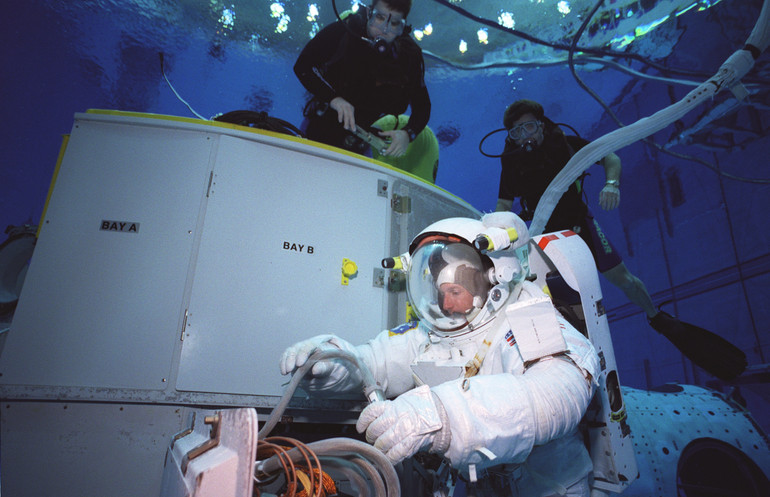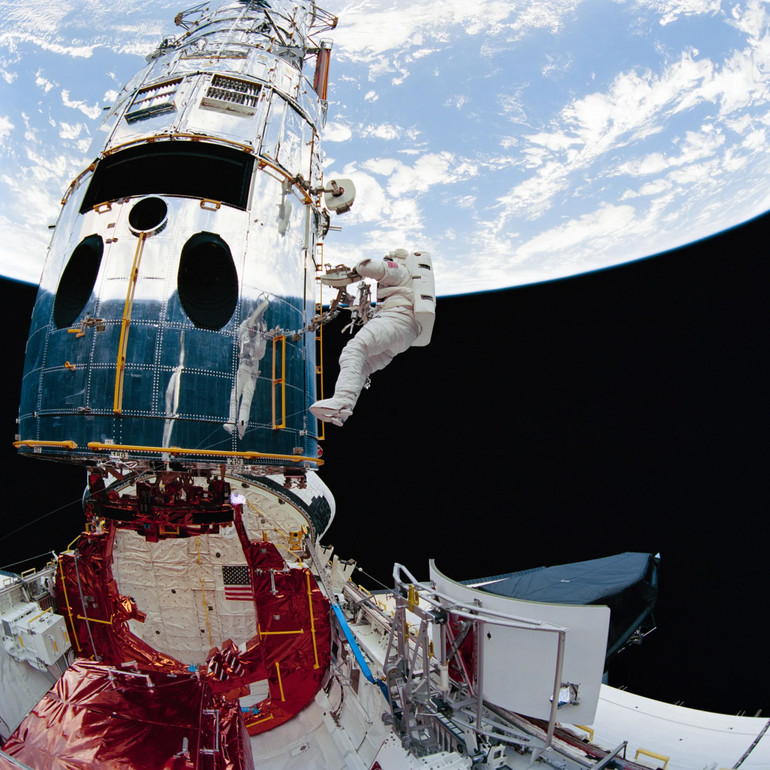How the work of the Hubble telescope affected the flights of astronauts into outer space
[ad_1]
After 1990, astronauts carried out 5 missions to service the Hubble Space Telescope.
NASA
NASA’s regular Hubble maintenance missions have influenced human spaceflight and changed the way astronauts work outside of Earth.
About this told in the American space research agency NASA.
The Hubble telescope is the first sophisticated optical observatory launched into orbit around the Earth in 1990. Due to its location in outer space, above the atmosphere of our planet, the device receives images of much greater brightness, clarity and detail than ground-based telescopes with similar optics.
Throughout its existence, “Hubble” carried out more than 1.6 million observations, which significantly deepened knowledge about space.

After the second mission, the Pistol Grip Tool became a common device used by astronauts.
NASA
Development of a telescope predicted, that repairs and upgrades will require the presence of astronauts in space. NASA employees during periodic visits provided uninterrupted operation of the telescope and equipped it with more and more powerful instruments – this made it possible to increase the capabilities of the device.
After Hubble was put into orbit, five missions were carried out to service it – within their limits, astronauts spent 57 days, 15 hours, 48 minutes and eight seconds in space.
The experience gained during these missions has influenced human spaceflight and the way we operate off-planet.
1. Researchers have managed to adapt the tools used by astronauts.
Working in bulky spacesuits and hard gloves in a dangerous environment, it is difficult to use even common household appliances. Also, due to weightlessness, tools often fly away as soon as they are out of sight.
Taking into account the experience of the first mission, NASA developed the Pistol Grip Tool. This device is very similar to a mechanical screwdriver, but has certain improvements:
- additional ability to pre-set speed, number of revolutions, direction and other functions for each individual task;
- the function of recording information about the work, which comes in handy during repeated work on the same site.
The Pistol Grip Tool was first used during the second Hubble maintenance mission. Now it is a standard tool for working in space.
2. Astronauts began to be prepared for difficult conditions and to develop their ability to react to unpredictable situations.

Before performing missions in outer space, astronauts practice in water tanks.
NASA
For this purpose, the Lyndon Johnson Space Center and the Marshall Space Flight Center (USA) created exact copies of Hubble in water tanks. There, astronauts constantly train before missions, improving the technique of performing tasks.
John Grunsfeld, an astronaut on three separate missions, recalls practicing every night for a year on a detailed replica of the power control unit before replacing it during Hubble maintenance.
“I wanted to personally know every connector I would have to test in orbit, all the key features of the circular connectors, the cable routing, even the pins and sockets of each connector”he says.
Nothing compares to the real difficulty of missions in space. If the spacewalk was planned for six hours, then the astronauts had to prove their ability to complete the task in a water tank in 4.5 hours.
3. Servicing the telescope made it possible to increase knowledge about how space is organized.

After one of the missions, the researchers added limiting elements to the telescope.
NASA
In particular, this concerned the analysis of vibrations from jet jets. The wrong vibration frequencies, as it turns out, can damage or even tear apart the spacecraft.
During missions, astronauts often held onto parts of the telescope with their hands, using them as handrails. This caused peeling of the paint from the Hubble. As a result, there was a risk of contamination of the telescope parts. The problem was solved by installing limiting elements.
The Hubble Space Telescope has always been a shining example of what humanity can achieve in space, NASA notes. Thanks to the device, specialists improved the methods of working in a weightless environment, learned to perform previously unthinkable tasks. So as humans set their sights on exploring the moon and Mars, Hubble will help pave the way for the next chapter in human space exploration.
Earlier we wrote how the Hubble telescope took a photo spiral galaxy and star formation within it.
[ad_2]
Original Source Link











